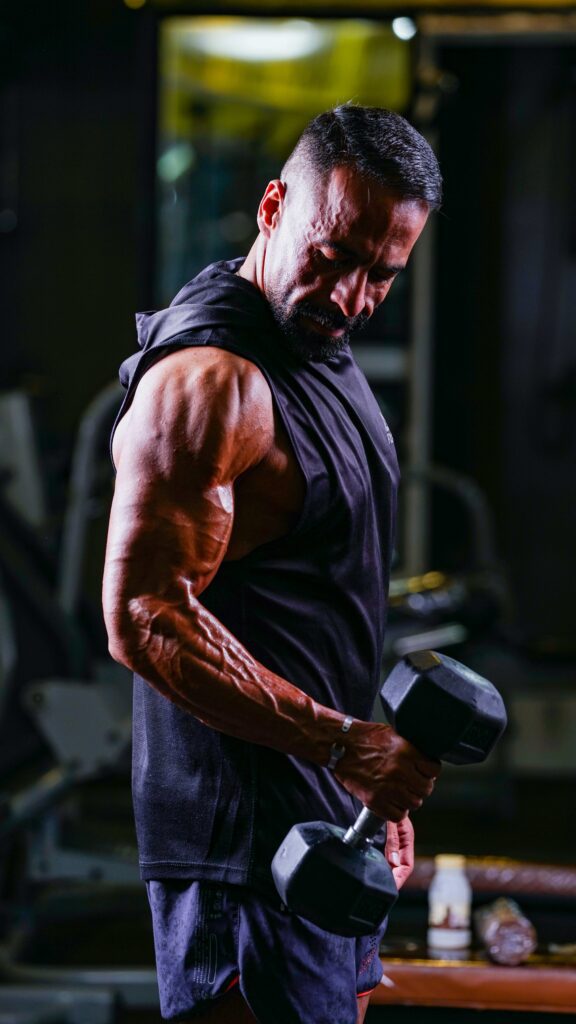The fitness-equipment landscape has never been this expansive. Ever since the pandemic sparked an uptick in sales of home gym equipment, gear companies have been in overdrive, pumping out everything from adjustable dumbbells to connected cardio machines to fully wireless recovery boots.
But amid all that innovation, something’s still missing. Scan the companies driving the next generation of workout gear and you’ll see little diversity. Most major fitness brands have overwhelmingly white ownership. While the equipment offerings have grown increasingly diverse, the faces that bring you that equipment have not.
“The disparities and inequality that exist for Black people in general exist in so many ways [in the fitness industry],” says Percell Dugger, founder of Fit for Us, an agency that advocates for and empowers Black fitness professionals and underserved communities. Dugger can name only a handful of Black gear players.
“Being in business, the ability to grow, the scaling and marketing, it is vastly disproportionate. We don’t have the opportunities or network to attract the support needed.”
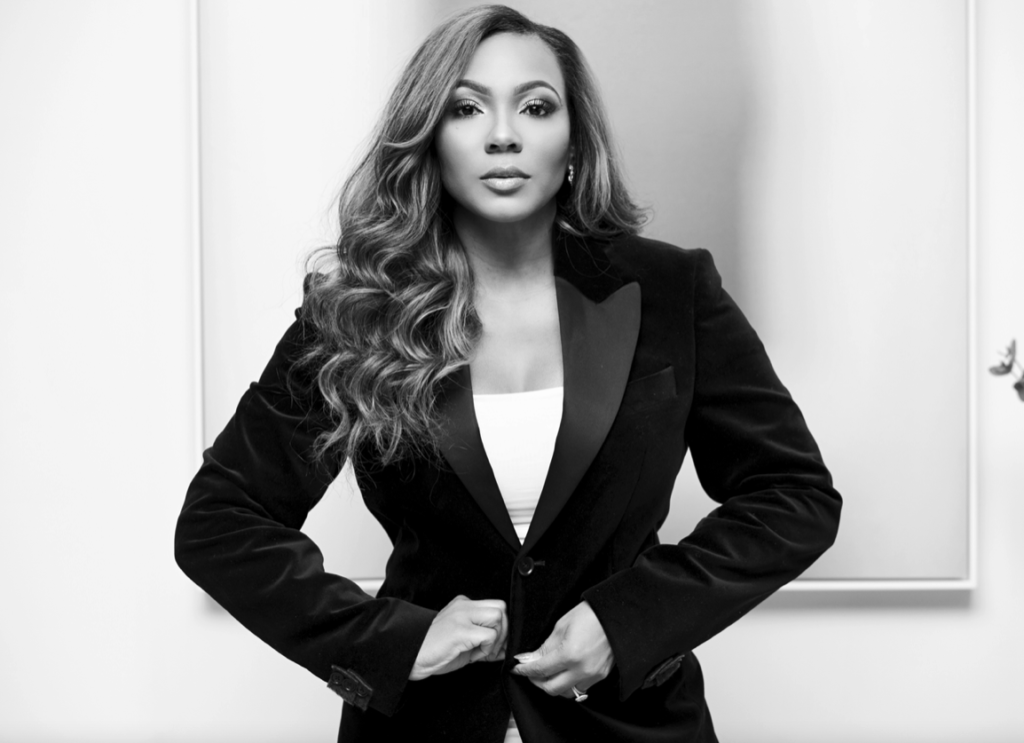
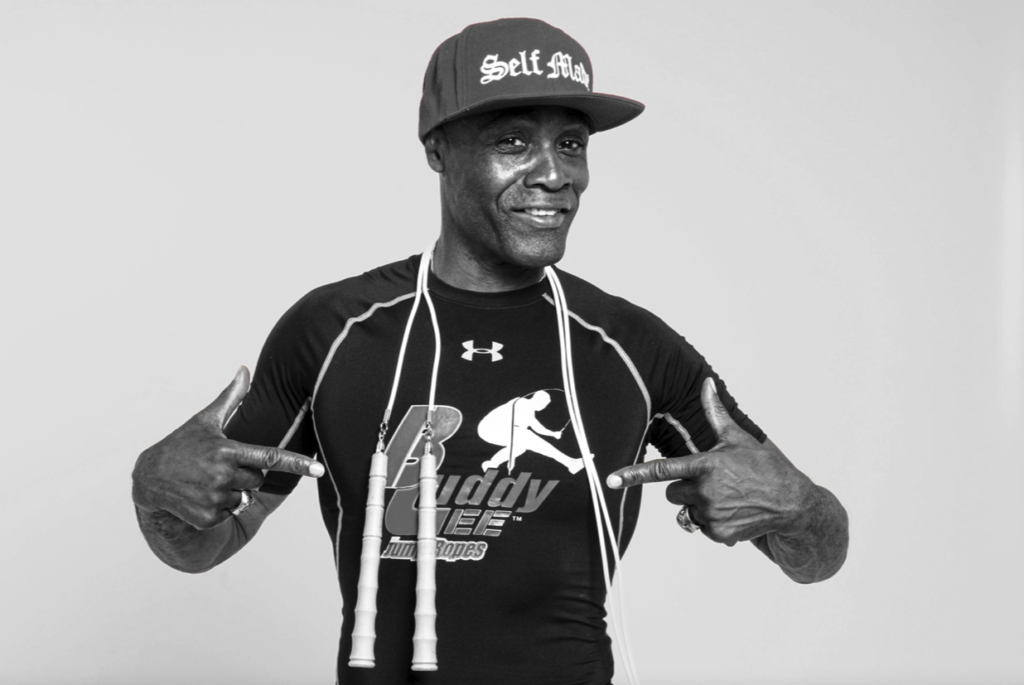
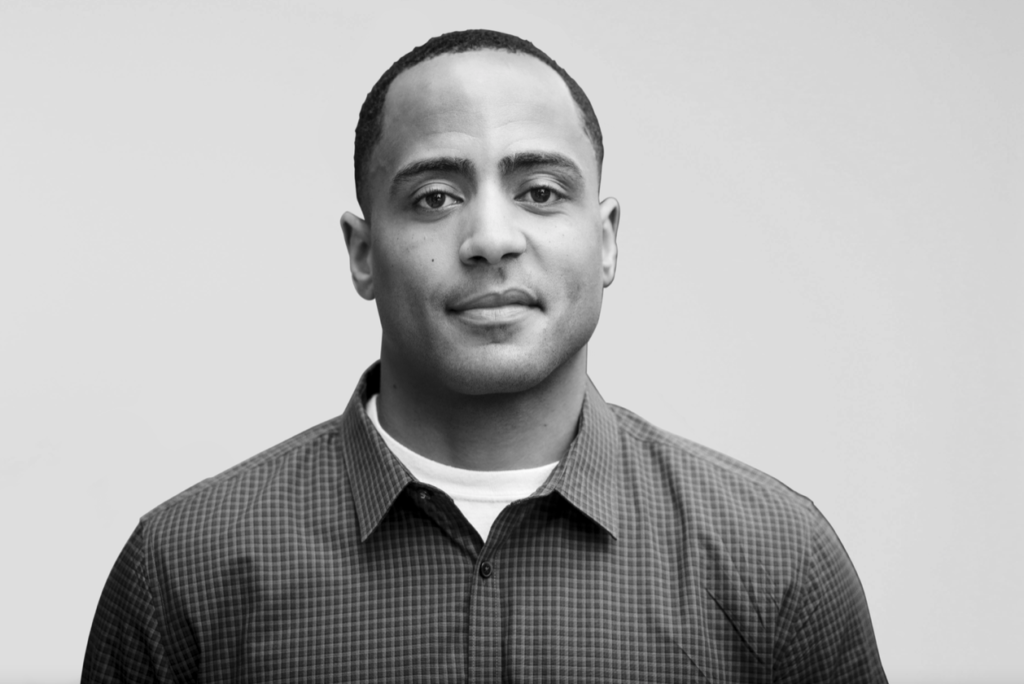
There are few statistics about underrepresentation among fitness-gear makers, but here’s what we do know: regardless of industry, Black-owned businesses face immense challenges. According to a 2020 poll commissioned by Groupon and the National Black Chamber of Commerce, 74 per cent of Black small-business owners still struggle with
a lack of capital and investment resources, and 59 per cent say they experienced some form of racism or bias when they started their business.
Despite that, a generation of Black fitness entrepreneurs has emerged. They’ve fought hard to get ahead while learning firsthand how much the lack of representation has hurt others like them – and how it may be damaging the entire fitness-gear industry. For every would-be gear maker who hasn’t been able to succeed or grow their company, these Black fitness-brand owners stand as role models – and proof that it’s possible to overcome oppressive odds, even if you shouldn’t have to.
“They’re creating a new way of [succeeding],” says John Butler, a professor at the University of Texas at Austin’s McCombs School of Business who specialises in entrepreneurship. It’s a way that hinges on lived experience that allows them to see the world differently – and their products can help everyone make greater gains.
Here, in their own words, is how three successful Black entrepreneurs managed to forge ahead.
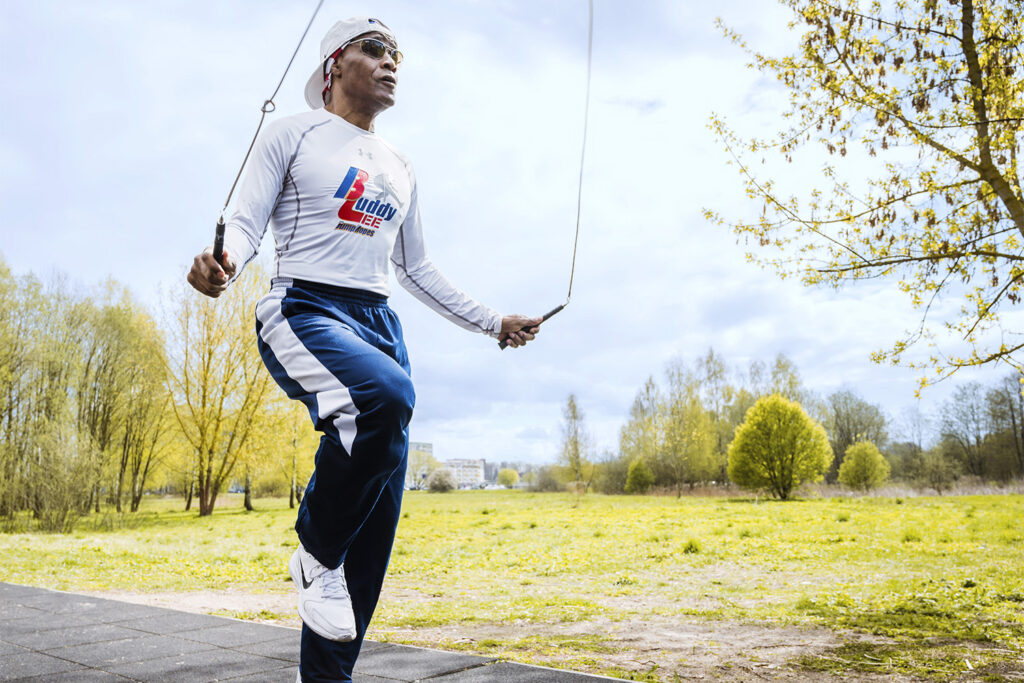
THE TRAIL BLAZER
As president of Buddy Lee’s Jump Rope Technology, Anthony “Buddy” Lee, 64, originated the swivel-bearing tech that’s in jump ropes today.
I was born in Birmingham, Alabama, and raised in Richmond, Virginia. My dad was a Vietnam veteran, but he wasn’t the same when he came back. It was up to my mum to take care of six children. Honestly, we struggled. There were many days I went hungry, but those are good lessons because when you’re at the bottom, you grow to understand that the only way out is up.
I was introduced to rope jumping by Mr Herbert Rainey, my next-door neighbour. He was a fourth-degree black belt in karate. He was jumping rope one hot summer day and put that rope in my hand just before 5 pm; it was after 9 pm before I put it down. I took that rope with me everywhere after that day – school, basketball courts, everywhere. I incorporated it into all my wrestling training, too. I’d jump with the rope to improve my athletic conditioning and get my heart rate up, and then I’d go into a match and finish it off in one or two minutes.
I wanted to make the jump rope even better, so 27 years ago my business partner and I invented the swivel-bearing jump rope that became a patented technology in 1997. We looked at the smaller ball-bearing technology they use for fishing rods and tested it on athletes, and their speed and conditioning started increasing drastically. Every good jump rope that’s out today uses some form of our technology.
We are the originators and the pioneers of jump-rope training and the swivel-bearing technology, but there are still issues. The only loan I qualified for was a share-pledge loan, where I had to have the same amount of money in the bank. So a bigger business loan to help me expand my company didn’t exist in my mind. There was no way I could ever get the necessary capital, so I accepted this reality.
Other companies with deeper pockets and backing have copied our technology and been able to do a tonne of marketing. You really can’t compete with that, but we’ve done everything right in terms of our positioning to become the official rope for the U S Olympic teams, which use our training techniques. We were Michelle Obama’s spokespersons for fitness with the Let’s Move campaign. We created a Preferred Course and jump rope for CrossFit, and we partnered with TRX – but now many companies have created their own branded ropes.
I simply know that I cannot ever give up. My mission in life remains the same: to help the entire planet of people get fit and strong in mind and body.
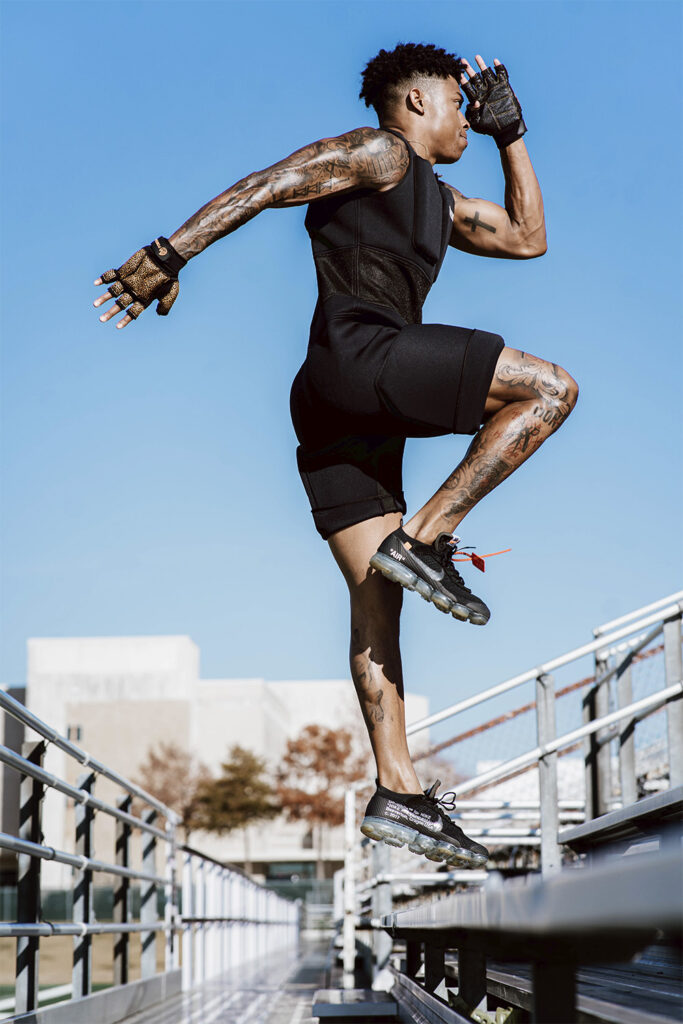
THE VISIONARY
Danyel Surrency Jones, 46, created Powerhandz, weighted basketball gloves meant to improve your dribbling skills, in 2014. The product is now sold in more than 80 countries.
Being a country Florida girl from Jacksonville, becoming an entrepreneur was not included on my vision board. I wanted to be a nurse when I was growing up, because my neighbour was a nurse. When you’re not exposed to different careers, you don’t tap into your passion; you do what is normal. That is what you’d see in the history of the Black community – until now. We are finally learning our strength.
I’m still astonished by what we’ve created with no blueprint. Powerhandz started with one vision and one mission in July 2014. The best ideas come from a personal need or solution. When Jason Williams revealed to Slam magazine that he used gardening gloves to improve his electrifying ballhandling, it was game over, especially once my cofounder added weight resistance to gloves to take his training drills to a more complex level.
Powerhandz was self-funded in the beginning. We have received loans and a line of credit and closed a few small funding rounds. Understanding how to accomplish generational wealth and obtain funding for a new venture were foreign conversations for first-time African American entrepreneurs. Our goal was to build a dope e-commerce brand, educate people and serve the community. However, this one product and one mission gave birth to our global mission in multiple sports.
I had been in the healthcare industry for 16 years prior to launching Powerhandz. I was the youngest, the only Black, and typically one of two female managers at the table. I will never forget attending a boardroom meeting as a director at the age of 25 when one of the older executives looked around the room and decided to ask me to get his coffee. Or when my VP informed me that he didn’t know how to manage women because we wear our emotions on our chest. These experiences led me to this very moment in time.
Today, I see a shift occurring for Black and women entrepreneurs. We have support from professional athletes like LaMelo Ball and serial entrepreneurs who are investors in our company. At one point I told the team, “I wonder if we should let a white male be the CEO of this company?” I wanted to let someone else be in the elite position of a company we worked so hard to create, because that’s what I felt was going to help us gain access and scale quicker. Wow! In hindsight that discussion was heartbreaking. And I’m glad we didn’t do it.
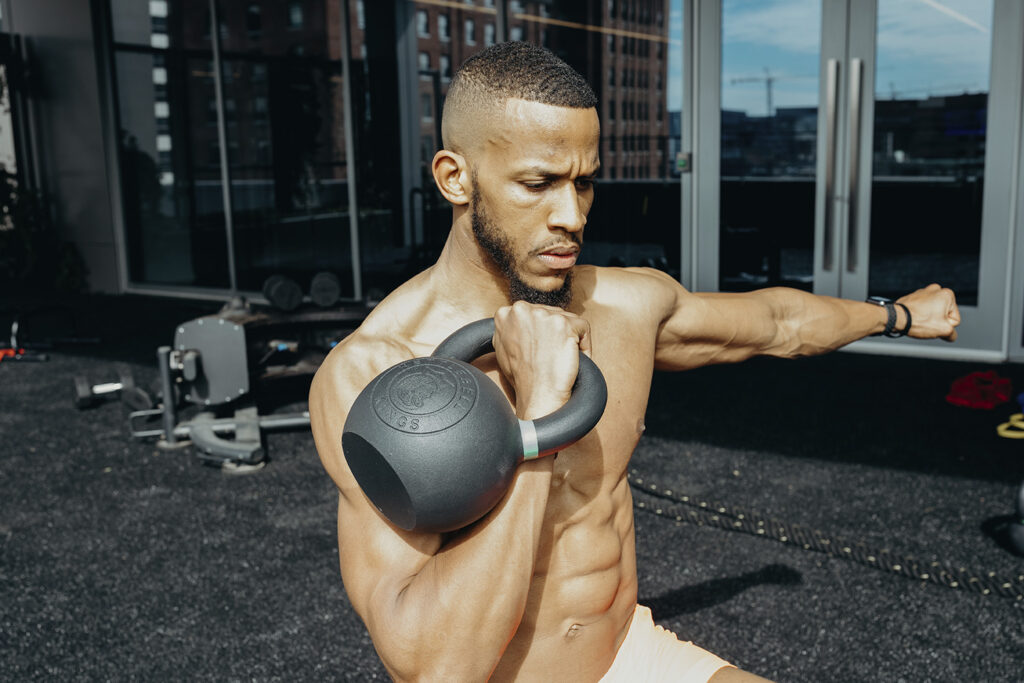
THE REINVENTOR
Chad Price, 38, teamed up with two friends to start Kettlebell Kings 10 years ago. Since then, the company has rethought the classic kettlebell, pioneered online kettlebell education and built a fitness community that goes beyond its product.
Nehemiah “Bubba” Heard and Jay Perkins are the two other founders at Kettlebell Kings. We met when we were 18. Bubba, who like me is Black, played football with me at Rice. Jay, who is white, lived in Austin and went to the University of Texas. After graduation, the three of us went into the corporate world, but it didn’t take long for us to realise that we were all too ambitious for that pace. The eureka moment for me was the actual results from using kettlebells to train. I saw results, but more importantly, I saw how easily the exercises translate to real-world improvements in your daily life.
We started the company in 2012. To build awareness, we used free content, such as videos and weekly workouts, to gather email addresses and we partnered with the top organisations in the kettlebell community to officially support and sponsor their events. But we had the toughest time getting funding. There were times we would go into a bank and we would ask them to give us a road map of the numbers that we needed to hit to establish lines of credit, but no one ever offered that information. We certainly thought about sending Jay into the banks alone. That way the banks would only see a white face. Instead, we initially bootstrapped it with what we had in our savings. We didn’t get any access to capital until after our first five years in business, when we started taking some short-term small-business loans. We’ve been working with pennies and reinvesting everything we can into the equipment for our growing client list every single year, year after year.
We’ve actually thought about dangling Jay out there for a lot of things! We were officially a Black-owned business, but we had to consider race and its impact on our business. We have to consider how racism affects getting our supply out of China and who represents the brand to a Chinese manufacturer, for example. A better example may be how the brand helps or promotes social change. The one #BlackLivesMatter post our company posted led us to lose social-media followers. It’s sad, but it’s true.















